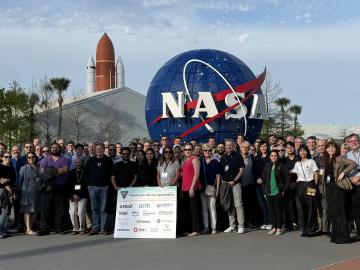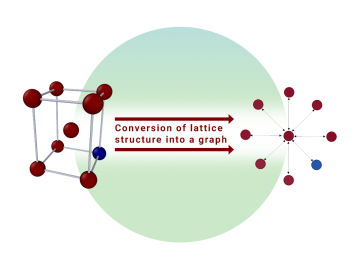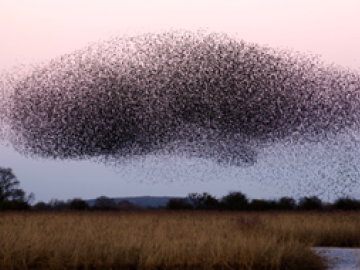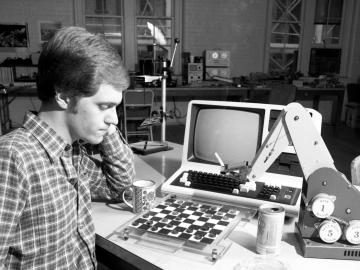
Filter News
Area of Research
News Topics
- (-) Artificial Intelligence (77)
- (-) Nanotechnology (17)
- 3-D Printing/Advanced Manufacturing (56)
- Advanced Reactors (12)
- Big Data (45)
- Bioenergy (68)
- Biology (80)
- Biomedical (42)
- Biotechnology (25)
- Buildings (30)
- Chemical Sciences (35)
- Clean Water (16)
- Composites (11)
- Computer Science (111)
- Coronavirus (19)
- Critical Materials (5)
- Cybersecurity (14)
- Education (2)
- Emergency (3)
- Energy Storage (32)
- Environment (116)
- Exascale Computing (51)
- Fossil Energy (6)
- Frontier (44)
- Fusion (38)
- Grid (32)
- High-Performance Computing (81)
- Hydropower (6)
- Isotopes (33)
- ITER (4)
- Machine Learning (37)
- Materials (51)
- Materials Science (55)
- Mathematics (8)
- Mercury (7)
- Microelectronics (3)
- Microscopy (23)
- Molten Salt (2)
- National Security (60)
- Neutron Science (82)
- Nuclear Energy (66)
- Partnerships (36)
- Physics (34)
- Polymers (9)
- Quantum Computing (35)
- Quantum Science (48)
- Security (16)
- Simulation (42)
- Software (1)
- Space Exploration (13)
- Statistics (2)
- Summit (40)
- Transportation (30)
Media Contacts

Held in Cocoa Beach, Florida from March 11 to 14, researchers across the computing and data spectra participated in sessions developed by staff members from the Department of Energy’s Oak Ridge National Laboratory, or ORNL, Sandia National Laboratories and the Swiss National Supercomputing Centre.

In the age of easy access to generative AI software, user can take steps to stay safe. Suhas Sreehari, an applied mathematician, identifies misconceptions of generative AI that could lead to unintentionally bad outcomes for a user.

SkyNano, an Innovation Crossroads alumnus, held a ribbon-cutting for their new facility. SkyNano exemplifies using DOE resources to build a successful clean energy company, making valuable carbon nanotubes from waste CO2.

In partnership with the National Cancer Institute, researchers from the Department of Energy’s Oak Ridge National Laboratory’s Modeling Outcomes for Surveillance using Scalable Artificial Intelligence are building on their groundbreaking work to

While government regulations are slowly coming, a group of cybersecurity professionals are sharing best practices to protect large language models powering these tools. Sean Oesch, a leader in emerging cyber technologies, recently contributed to the OWASP AI Security and Privacy Guide to inform global AI security standards and regulations.

Researchers at the Department of Energy’s Oak Ridge and Lawrence Berkeley National Laboratories are evolving graph neural networks to scale on the nation’s most powerful computational resources, a necessary step in tackling today’s data-centric

New computational framework speeds discovery of fungal metabolites, key to plant health and used in drug therapies and for other uses.

In summer 2023, ORNL's Prasanna Balaprakash was invited to speak at a roundtable discussion focused on the importance of academic artificial intelligence research and development hosted by the White House Office of Science and Technology Policy and the U.S. National Science Foundation.

A team of researchers from the University of Southern California, the Renaissance Computing Institute at the University of North Carolina, and Oak Ridge, Lawrence Berkeley and Argonne National Laboratories have received a grant from the U.S. Department of Energy to develop the fundamentals of a computational platform that is fault tolerant, robust to various environmental conditions and adaptive to workloads and resource availability.

Despite its futuristic essence, artificial intelligence has a history that can be traced through several decades, and the ORNL has played a major role. From helping to drive fundamental and applied AI research from the field’s early days focused on expert systems, computer programs that rely on AI, to more recent developments in deep learning, a form of AI that enables machines to make evidence-based decisions, the lab’s AI research spans the spectrum.


